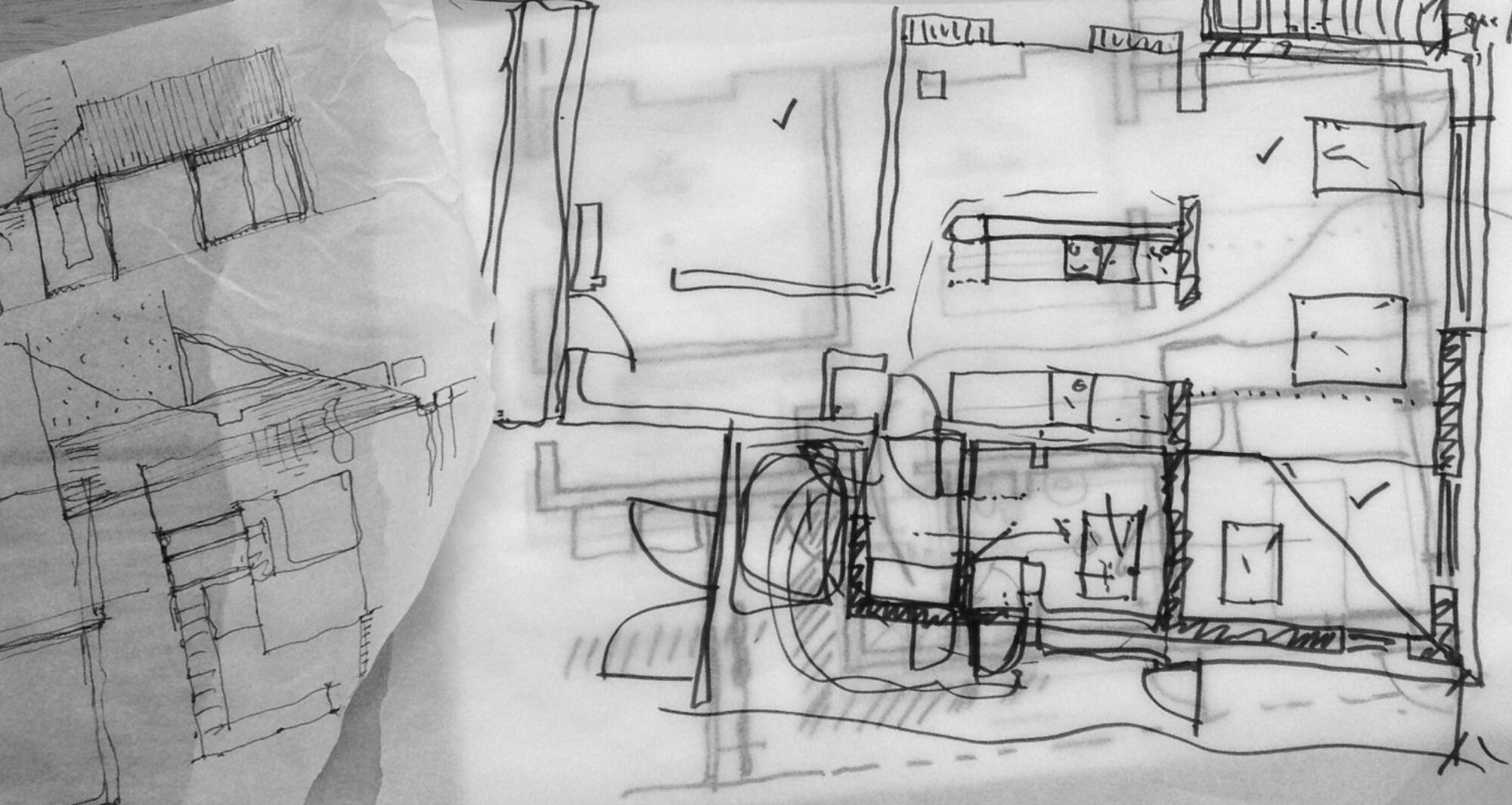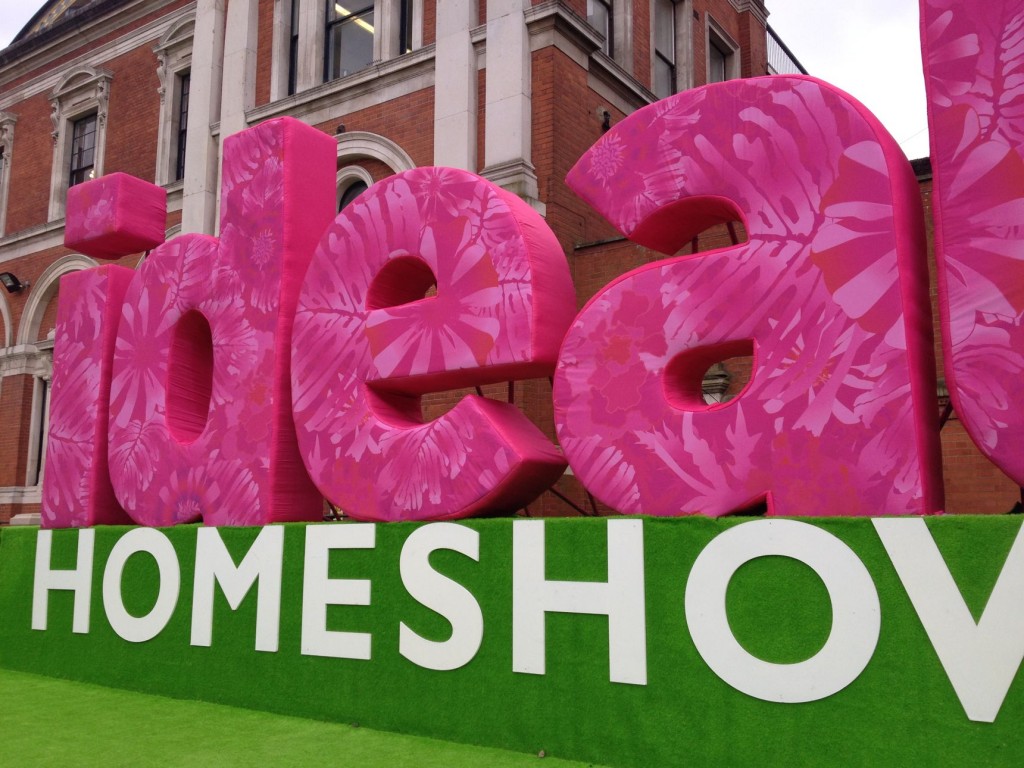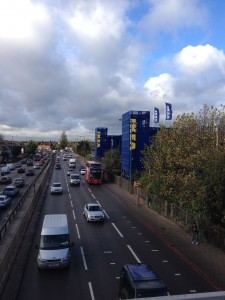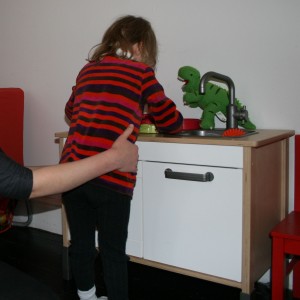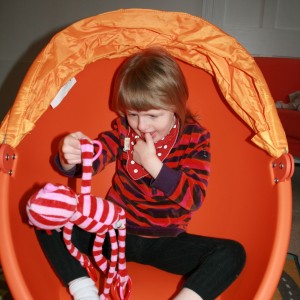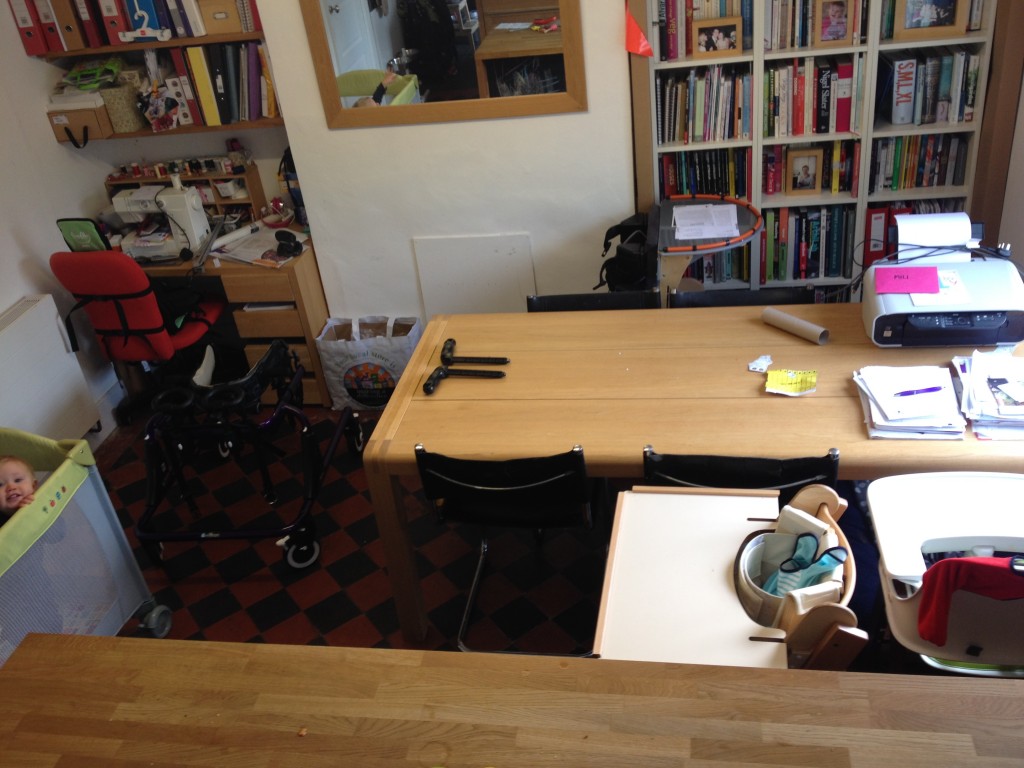On my quest to get up to date with what’s going on in the design world, and try to work out the amount of crossover there is between the homestyle and homebuilding sector and the independent living world, I’ve been googling, tweeting, browsing magazines and have gone along to a few shows/exhibitions. I had hoped to get to a few more (unfortunately the pesky issue of childcare foiled me there!) so I had planned this post as a comparison of some of the home shows and independent living shows, however as I did make it down to London Olympia for the last weekend of the Ideal Home Show, I’ll have to concentrate on that trip!
I was running late (as usual!), and almost managed to go to the wrong venue (Earls Court – oops!), but I made it just in time to catch the start of George (Amazing Spaces) Clarke’s talk! I really like George Clarke’s programmes, Amazing Spaces and Shed of the Year are particularly enjoyable, I think because they are so tangible to people – it’s so easy to imagine yourself getting stuck into a small project like the ones featured! In fact every time I watch Amazing Spaces, I end up on google looking for small caravans to refurbish (and I’m really not joking! – a bespoke adapted caravan would make holidays so much easier with Twinkle because sorting out a safe bedspace can be a major issue for us on overnight trips!)!
I love these sorts of exhibitions! There’s always loads see, but they can be pretty overwhelming unless you have a specific focus.
I think my favorite area this year was the garden zone, probably because it is most current in my mind – we are planning to sort out our own forest garden and would love to add a lot of sensory aspects. I’m also a little obsessed with inclusive playgrounds so I’m always looking out for interesting landscaping ideas, sensory elements and interesting textures.
As well as updating myself on design trends and picking up ideas for our project, the big reason for me going to the exhibition was to see how (if?) inclusive and/or accessible design was addressed. I’m afraid to say it really wasn’t much at all (I’m so sorry to pick on you, Ideal Homes, but as I didn’t make it to Grand Designs Live or the Homebuilding & Renovating Show, I don’t know how they compared).
There were very long queues for the full scale show homes (built in the middle of the hall!) but I felt I must look around the ‘Future proof home’ thinking it would be the one for me. Info on the route round was a bit lacking, the people in front of me were expecting futureproofing to mean technology and (of course!) I was thinking futureproofing meant design for life, but in actual fact it was environmental sustainability (we had to ask one of the members of staff at the end of the route!). For more information I was directed to the company who had a stand just outside. From an environmental point of view it was really fantastic, almost passivhaus standard which is exactly the right direction we should be going as far as I’m concerned from an energy point of view. However there was no specific reference to inclusive design or accessibility as part of the futureproofing. I got the impression that it was not something they’d really considered as ‘a thing’. Yes, of course they’d design for wheelchair access if the client asked, as each house would be bespoke, but for a product that is such a huge investment shouldn’t we be encouraging homeowners to consider their future needs? I get that growing old or considering ill health is not completely in the spirit of aspiration for an ‘ideal’ future, but people are willing to discuss insurances and invest in pensions for the future, so why wouldn’t they want to think about designing their house to adapt for their lifetime? – If they could be shown how inspirational design could make that a reality!?
The House Beautiful showhome was a different story. I have to say the actual aesthetic of the house was not completely to my taste (sorry guys!) but the important thing is that the internal planning has been well considered. The driver for them was to design for multi-generational living, and it followed that the resulting layouts are accessible and adaptable and look as if they follow most, if not all, of the Lifetime Homes principles. The bloke at the stand that I spoke hadn’t heard of Lifetime Homes, and it wasn’t mentioned on the literature, but if the plans do comply I think they ought to be celebrating that and using it as a positive sellable asset in the marketing of their new homes!
A few people I spoke to around the hall seemed interested but I didn’t feel it was something that was really on the agenda and one guy quoted some odd (very low) figures to me about the number of people who ‘need’ inclusive housing. On the spot I couldn’t recall any figures myself so I made a mental note to research the stats! (Edited to add this link to the government website giving some disability facts and figures). However my point was, inclusive design isn’t just for people who ‘need’ it, it’s not just for the stereotype disabled person, it can just make life easier for everyone e.g. parents with prams and wriggling toddlers. When I put that to him, he said ‘well our parent’s managed’ – erm!? Don’t we want more from an Ideal Home than just managing? Shouldn’t our homes be designed to make life easier for all the family? Young, old and disabled or not?
As I was leaving the hall, I stopped at the map by the entrance and had another scan through the exhibitors to see if I’d missed the big accessible design area….but no, nothing obvious. A couple of the (very lovely and very helpful) staff asked if they could help and I asked them if they could think of anything. Neither of them could. I also asked them if they’d had many disabled visitors, and they said yes they had!
So Ideal Homes (and all other homestyle and homebuilding media), in planning your future shows I’d like to ask you to:
Please think about the disabled visitors you have that want to be inspired!
Please think about the vsitors who have disabled or elderly relatives and friends who could make their homes more accessible and welcoming!
There is a huge market out there that you are missing out on!
